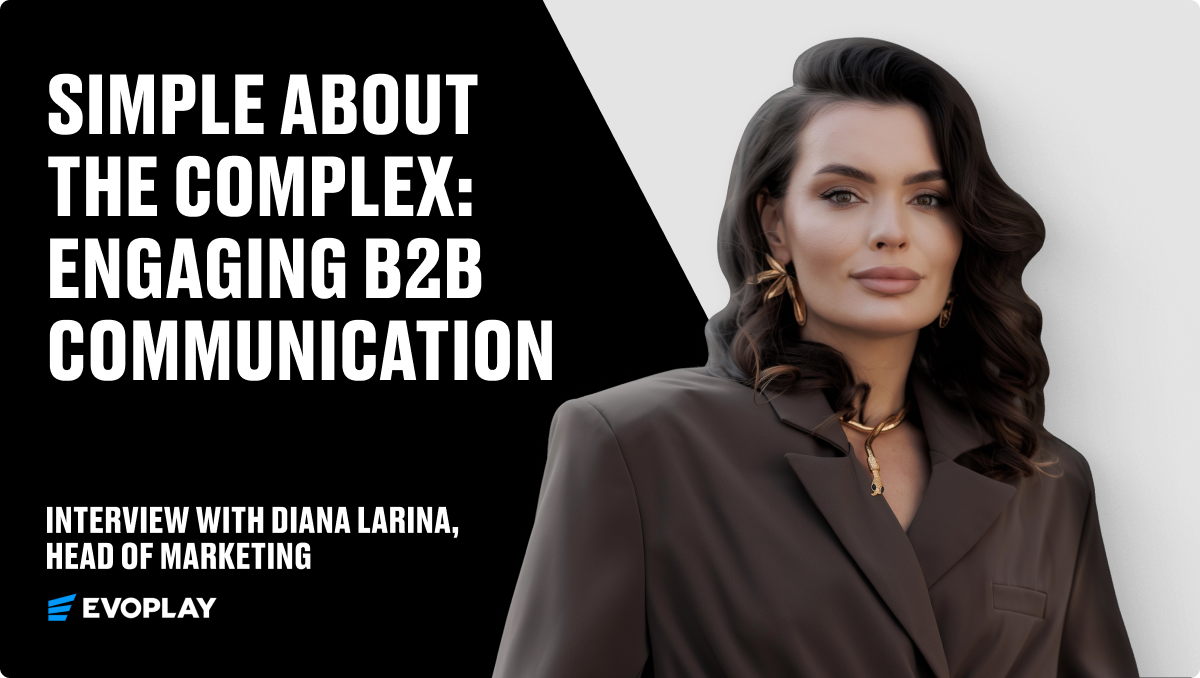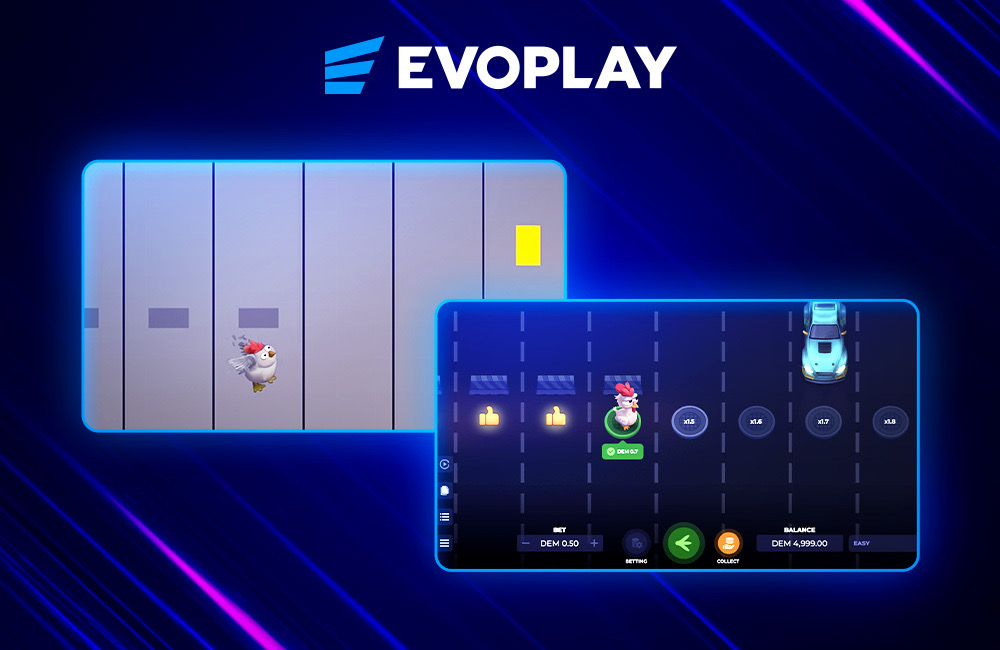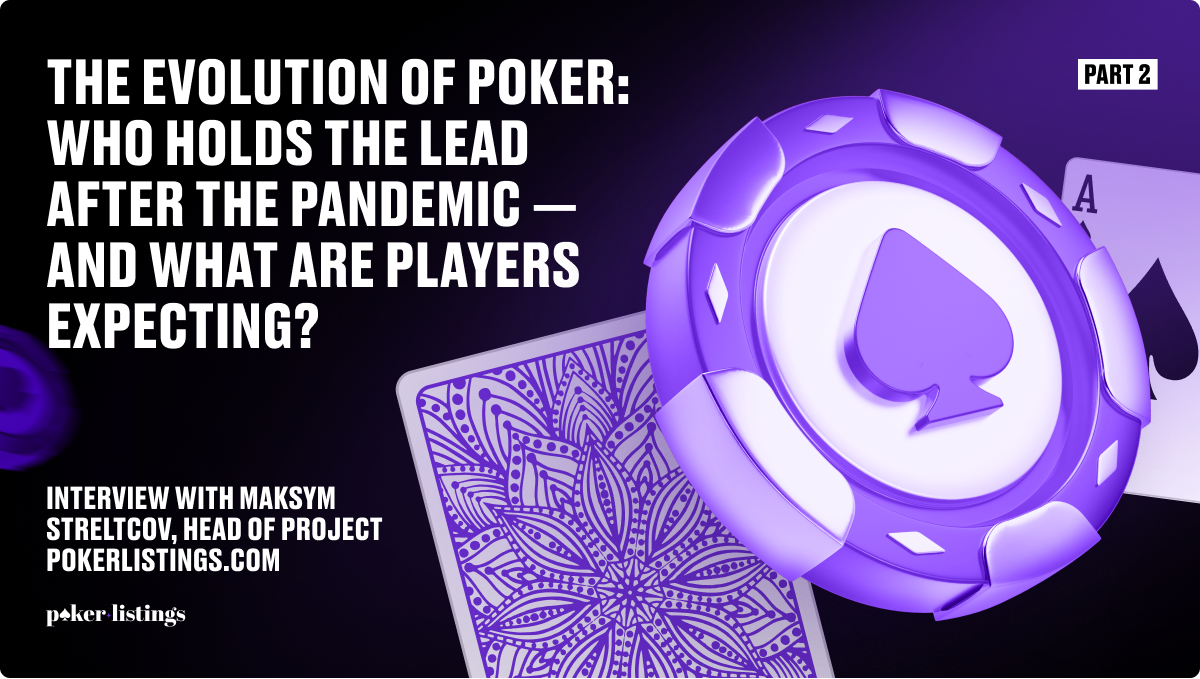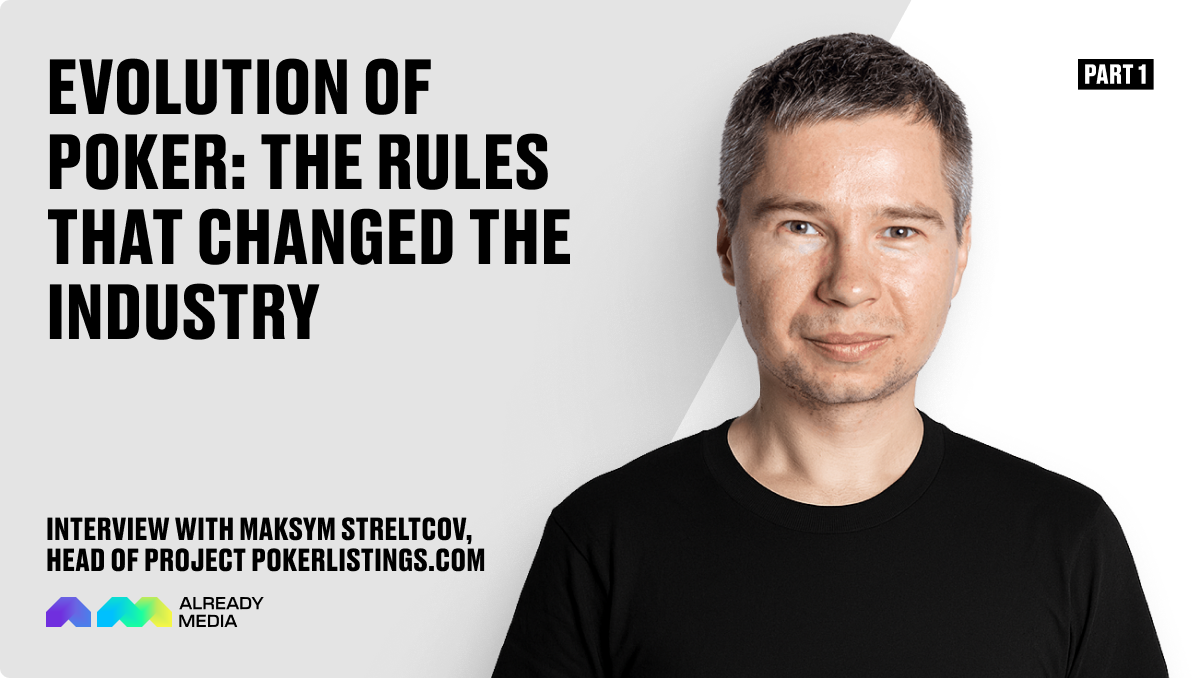
The new guest of our Expert Talks series is Diana Larina, Head of Marketing at Evoplay. She shared her expert perspective on what makes B2B content truly engaging and how to ensure it delivers clear, meaningful messages to its audience. The article also explores why structure, empathy, and a human voice are essential in professional communication — and how to avoid “content fatigue.” Diana offers her take on tone of voice, storytelling, and multi-channel strategies. Let’s take a closer look at the approaches that help build trust and stand out in a competitive information landscape.
Capturing attention: Practical, human, and engaging B2B content
Among professionals in our field, the topic of “content fatigue” is coming up more and more often. In your opinion, what actually makes B2B content engaging in the iGaming space today?
Agree, we’re all bombarded with so much content every day that it’s harder to catch someone’s eye, let alone hold their attention. Based on my experience, what really works is keeping things sharp, practical, and straight to the point. People in our industry value their time. They appreciate content that gives them something useful right away – whether that’s a clear example, real-life results, or quick, actionable takeaways.
Case studies and bullet-point insights work well because they speak our language. But even though we love data, we shouldn’t forget the human side. Behind every number is a real story, a decision, or a challenge. That’s why, in our content, we like to add something light – a touch of humour, a relatable moment, or even an unexpected twist. It keeps the content alive and helps build a stronger connection with the audience.It also lets us look at familiar topics from a fresh angle.
Many B2B professionals in iGaming have been around for years – they’ve seen the same stories and messages repeated time and again. What really catches their attention is when you bring a fresh perspective to something they thought they already knew. Sometimes it’s not about finding something completely new, but about telling an old story in a way that brings value thanks to a new perspective.
Peer-to-peer (P2P) content
Peer-to-peer (P2P) content is also super powerful. When insights come from other companies or industry peers, they tend to hit harder than formal reports or white papers. For example, when providers share their own product launch experiences. What worked, what failed, what they learned? It just feels more real and relevant. And of course, social media matters. LinkedIn, in particular, has become a key place for building visibility and connecting with the iGaming community. According to some recent research, nearly 80% of B2B decision-makers now use social media when making purchasing decisions. It’s where people are, so it’s where we need to be with our content. For me, the B2B content that really stands out today is simple: clear structure, real insights, and a human touch. Get those right, and you’ll cut through the noise and genuinely reach your audience.
We’ve observed a growing shift in how B2B teams approach tone of voice and storytelling. How do you adapt traditional B2B messaging to better serve partner communication goals? What helps you strike the right balance between technical depth, simplicity, and engagement?
Speak like an expert, but explain like a person. That’s our golden rule. We humanise the professional challenges people face, and that’s what makes our content easier to read. For us, it’s all about balance – sharing technical details while still showing the brand’s personality. Tone of voice plays a huge role here, and it can (and should) shift depending on the platform, especially in B2B. We’re experimenting with this a lot right now, especially on social media. B2B content doesn’t have to sound cold or overly corporate like it often did before. It should feel human, clear, and truly engaging.
Real content mastery also means making sure the ideas actually land. You have to get how someone thinks and talks, then turn that into content that feels real and relevant. Flexibility across channels is key. The way we speak on LinkedIn, for example, might be sharper and more personal, while other platforms might call for a more formal tone. But across all of them, humanising complex ideas and adding that unique voice. That’s what really makes B2B content stand out today.
The iGaming market is seeing a rise in highly complex products targeted at broader audiences. What should be considered when communicating these solutions clearly and professionally – without oversimplifying or losing critical nuance?
The key is to break the product down based on who you’re talking to. Different people absorb information in different ways, so we offer both – written and video formats. But since the market is moving towards video, we’re leaning into it more and more, and we’ve built solid processes to scale it efficiently, including with AI support. For partners, we’ll focus more on features, value, and how easy it is to integrate. And, by the way, we noticed that it actually works better to build a content series. That gradually uncovers different sides of the product, rather than trying to explain everything at once. Even our pitch decks now often link to video explainers to break down complex promo tools and product features for our partners.
Of course, B2B still values written content – it’s where people research, compare, and go deeper. But visual content is quickly gaining ground here too. When it comes to players, it’s all about keeping things simple and practical. We offer tutorials, step-by-step guides, and a lot of video content. Not everyone wants to read, and often, people don’t even know where to look for the info they need. But when it’s visual and right in front of them, it clicks.
Data supports this trend, showing that especially Gen Z and Millennials prefer video content over written text. That’s what I personally love the most – our how-to videos that walk players through the process. Where to click, how to place a bet, what to do next. Today’s audience expects this. They want fast, sharp explainers in formats like TikTok, Reels, or YouTube Shorts. Quick content that helps you get the point and move on.
We see different teams lean into a variety of formats – from technical guides to brand-driven case studies. In your experience, which content types are most effective for showcasing expertise and technological leadership?
From what I’ve seen, mixing different formats really works best. Even a technical blog gets way more interesting when you bring in real thoughts or comments from the team. That’s what actually makes it feel alive, not just some boring theory you have to push through. And these days, with everyone used to video and fast content, seeing behind-the-scenes stuff really hits home. When we break down the complexity of building a new product, sharing sketches, early drafts, or telling the story of how the game evolved makes it real and easy to relate to.

Like with our latest game, Uncrossable Rush, we’ve started putting out behind-the-scenes content. It gives people a real look at the creativity, teamwork, and process at all. With these human touches, the content has become richer and helps people connect with what we do. And that’s what really builds our reputation as experts and innovators.
Building trust: strategic distribution and measuring true impact
In today’s noisy media landscape, distribution channels matter as much as the content itself. Which platforms and content formats do you prioritize for B2B outreach – and how do you tailor your messaging for each?
Our approach is very personalised – that’s where I believe our strength lies. We treat every partner individually. This fits into a bigger idea we call the content distribution philosophy. The same piece of content can be reshaped in different ways. For example, an article can turn into a newsletter, a social media post, or a short video. So, the idea is to deliver the same content across different formats.
When it comes to platforms, we focus on LinkedIn, email newsletters, industry-specific media, and our own channels. We also add videos to boost engagement. The key is adapting the message for each platform. Even if the core info or solution stays the same, we present it differently. Sometimes emphasising numbers, sometimes emotions, sometimes expert commentary – choosing the right format to connect.
B2B content performance is often measured by reach. In your opinion, which metrics truly reflect whether content is working – building trust, supporting the sales funnel, and attracting high-quality partners?
When it comes to B2B content, reach is usually the go-to metric. But honestly, reach alone doesn’t really tell you if your content is working. If it’s actually building trust, supporting the sales funnel, or bringing in the right partners. For us, it always comes down to tracking the right things that genuinely reflect these goals. When we look at website content, we focus on time spent on the page and return visits. If someone’s taking the time to really read your content and actually comes back for more, that’s a pretty strong sign they trust what you’re saying.
On social media, it’s not just about likes or views, we track how many leads actually land on the website from social posts. Even better if we can follow their journey through the funnel over time. That’s where lead quality really matters. We keep an eye on how many convert from MQL – early-stage leads who’ve shown real interest, to SQL – the ones who’ve passed the qualification stage and are ready for deeper sales conversations. We also look at how many we’re adding to the MQL pool overall.
One more thing our team always tracks is branded search volume. When more people are actively Googling your company by name, that’s a real trust signal. It shows your brand is sticking with them. So yeah, top-level reach is good to watch, but what really tells us if content is doing its job is branded search growth, lead quality, and final conversions.
Publishing regularly is important, but building a system is even more so. What internal practices help your team develop B2B content that’s not just consistent, but strategically aligned and long-term effective?
We think of marketing content as a funnel with three stages: awareness, consideration, and conversion. At each stage, we share the right info about our team and what we do. So potential partners get what they need when they need it. In the end, this approach helps bring in regular inbound leads, basically. If I were to sum it up, it’s all about being strategic with your content. You need to know what to share at each stage, the best way to share it, and the right format. Like a short video or presentation – that will keep people interested and help turn them into partners. Having a clear plan like this makes everything work much better.
Summing up our discussion on how to create B2B content that doesn’t just add to the noise but actually resonates with its audience. From the conversation with Diana Larina, it’s clear that effective communication needs to be a mix of structure, practical value, and a human approach. This isn’t just a way to stand out in an overcrowded information space, but a key tool for building trust and long-term partnerships. Creating quality B2B content is a strategy where every element matters—from tone and delivery to channel and format choices. It’s this attention to detail that allows brands to speak the same language as their audience and achieve real business goals.

